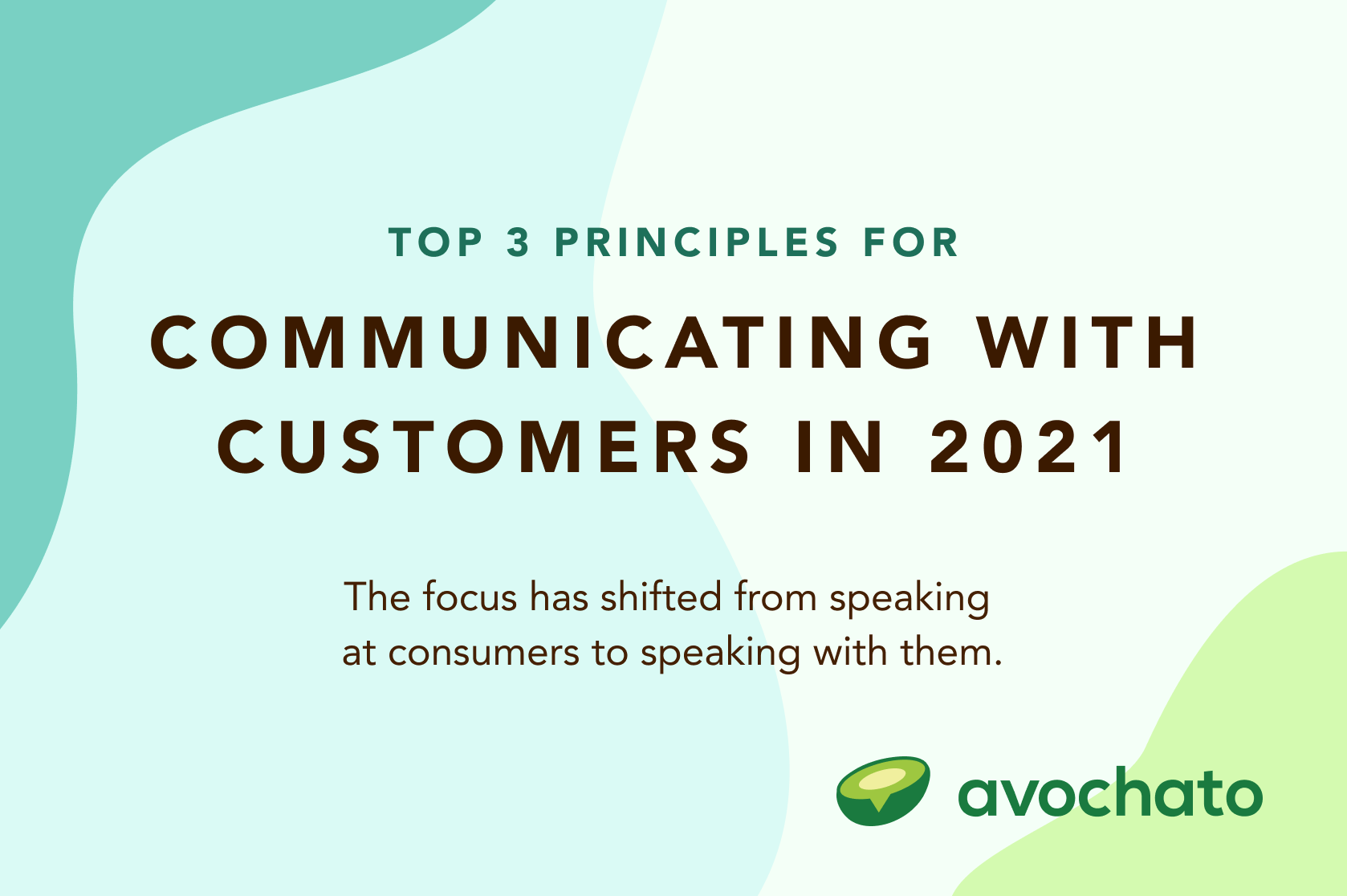 Customer communication is often taken for granted.
Customer communication is often taken for granted.
As in, “The way we communicate with customers works just fine.”
Or, “We’ve always done it this way.”
It turns out, however, that what customers want from their communications with you and what improved communications can do for your business are both important. And they both require a change from tradition and a new outlook on what it means to communicate.
The focus has shifted from speaking at consumers to speaking with them.
Though this may not seem like a significant difference, there’s so much more going on here.
Customers are looking for conversations with the brands they do business with, not large-scale, non-targeted, shot-in-the-dark blasts. Businesses (like yours) benefit by approaching customer communications as conversations because relationships are built and nurtured in this way. And soon, cell service carriers will reward well-targeted, value-soaked communications, similar to how search engines reward websites that provide information of value.
Changes are here for communications in 2021, and more are on the way. Here are the top three principles that any business should apply to their marketing comms strategy to be competitive this year and for years to come:
Have an ongoing conversation
Customer lifetime value (LTV) is one of the most important metrics used today for a reason. It shows the value of one customer over the long term. This view showcases a key value: your company wants to play a meaningful role in their lives, not just win their business. Not only is a strong relationship with customers good for business, but it’s also what consumers want, so considering LTV as a critical metric is important in 2021 and beyond.
In this vein, your customer communications should be focused on keeping the conversation ongoing. Better metrics shed light on the long-term value of a customer and the conversations you have. When striving to maximize customer value over the long-term, communications will naturally play a significant role.
It’s crucial to keep track of how you’re communicating with them — what works, what doesn’t work. In this way, keeping the conversation with your brand ongoing will help you not only keep in touch with customers over time but will actually help your metrics improve so you can learn (and implement) even better communication as you go along.
That said, it will be critical to have multiple channels at your disposal and to recognize when to use each one to get the best engagement with your customers. Campaigns will be more successful this year and beyond when they’re designed from the ground up and based on the concept and goals rather than a specific channel.
Rather than letting the channel decide the delivery for you, which could box you in, this approach could help you determine the best way to get your message to your customers in the most meaningful way.
Make it a two-way discussion
Part of what it takes to have two-way conversations with customers is to leave those lines of communication open, and encourage people to get in touch with you without you reaching out first. In fact, ninety percent of consumers say they want to provide feedback to brands, but only 46 percent say they ever have the chance to.
Imagine you’ve filled out a form on a company’s website to learn more about the coolest new marketing software. A few minutes later, you mute a call from a number you don’t know because you’re in a meeting, only to learn from the voicemail that it was a sales rep from that company with the coolest new marketing software. You are interested, but you only have a couple minutes, so you decide to shoot them a text — a simple, almost second-nature move that would get you what you need in almost every other situation. But, you never hear back from the company and completely forget about it.
This is not just an exercise in imagination: 58 percent of consumers said they responded to a company’s missed call with a text message but couldn't get through to anyone that way. That’s a lot of businesses that are unavailable to connect with consumers who simply prefer an alternate channel of communication.
Opening up the two-way chats to truly be two-way (no matter how a customer wants to get in touch with you) is important to building and maintaining strong customer relationships. It’s also just good business.
Use people-focused messaging
Targeted marketing takes on a few new qualities in 2021. First, the importance of intersectionality in marketing is a huge movement that will certainly impact the way we communicate to our customers.
Rather than seeing each customer touchpoint as a transaction, it’s another way to get to know them as a whole, dynamic person. And rather than seeing customers as groups of people with similar qualities, we can start to see that the identity and context surrounding each customer’s experience influences how they interact with your brand. This should be obvious, but it’s only recently that these ideas have pervaded marketing to take us beyond persona-centric communication to human-centric communication.
There are so many intersections that can impact how your customers interact with your products and brand, including race, gender, sex, sexual identity, location, ability, language, beliefs, device type — even mood.
Intersectional communications are going to be critical this year and beyond, especially as standards roll out that reward user-centric messaging and downgrade the capabilities of spammers. The more intersectionality is considered in your overall marketing strategy, and the more it’s included in your communications strategy in particular, will impact how much customers appreciate your messages. As a result, great messaging that resonates with a dynamic, multifaceted audience will be more successful than messaging based on generalized and stereotypical personas.



